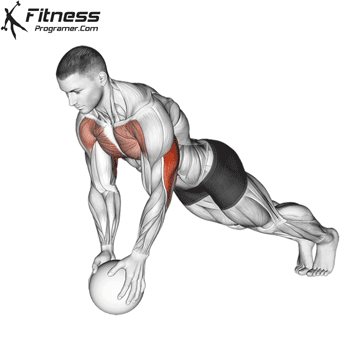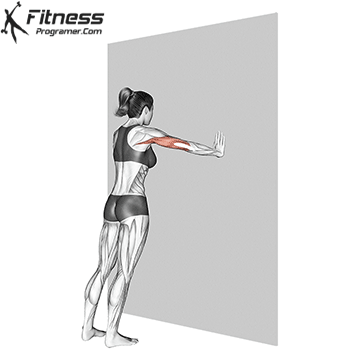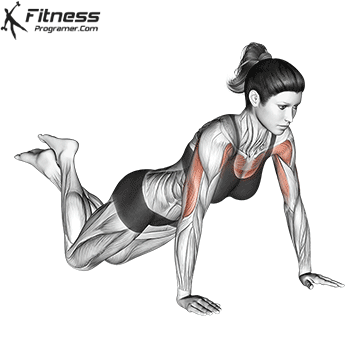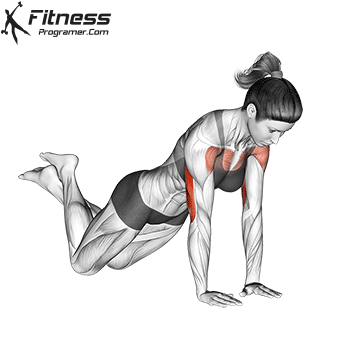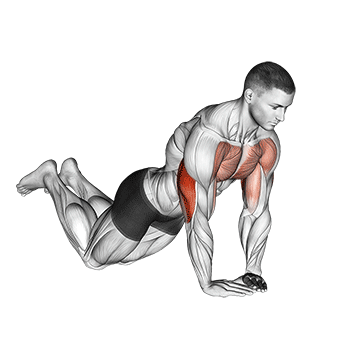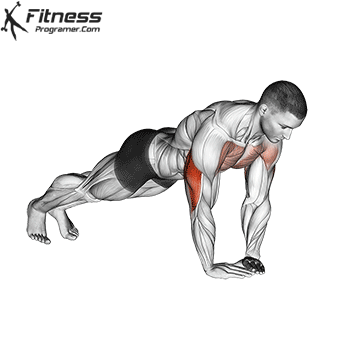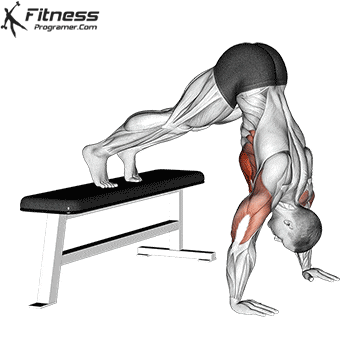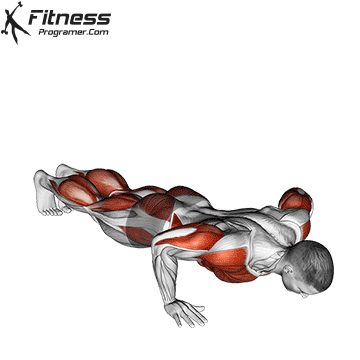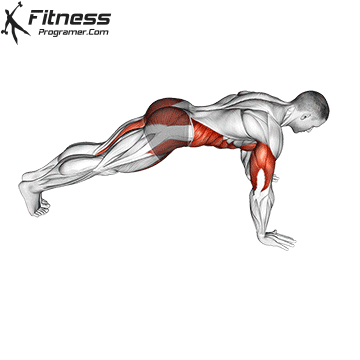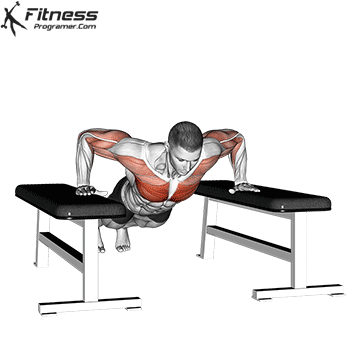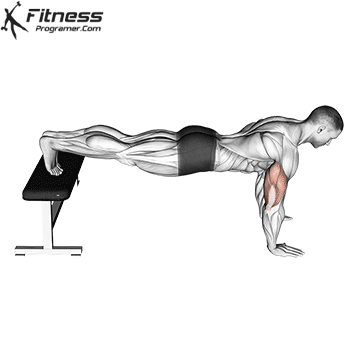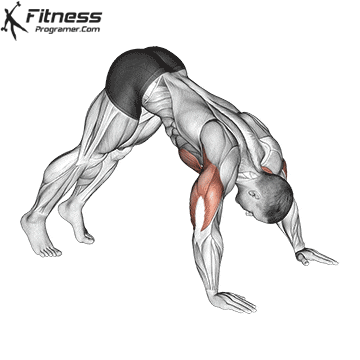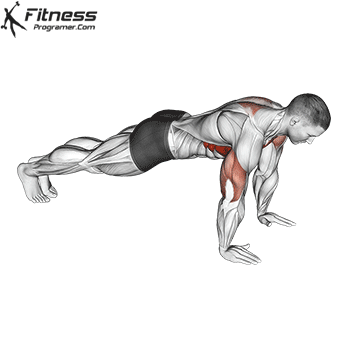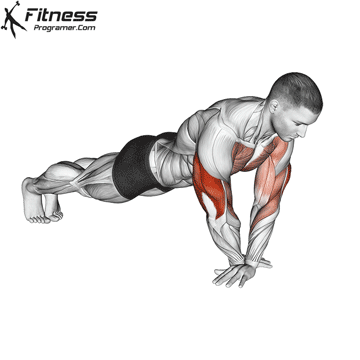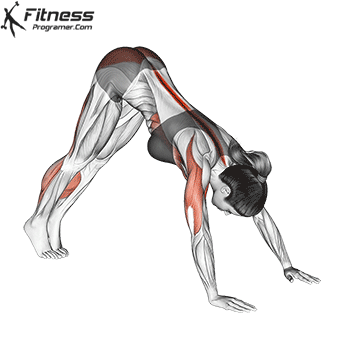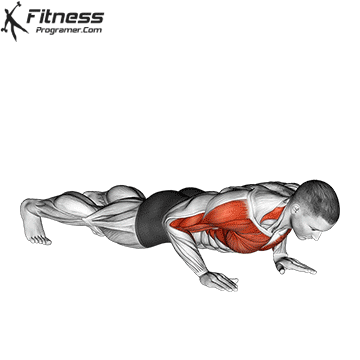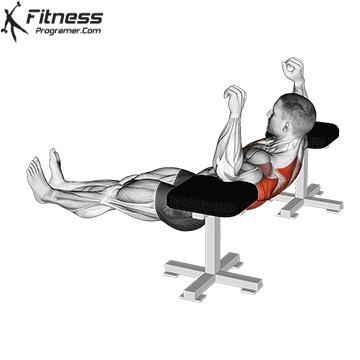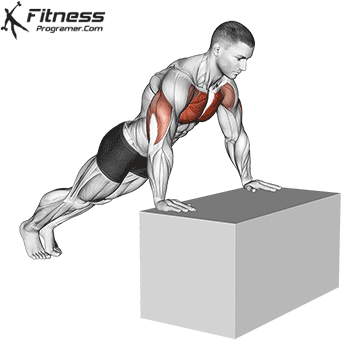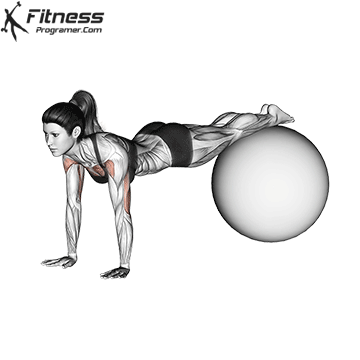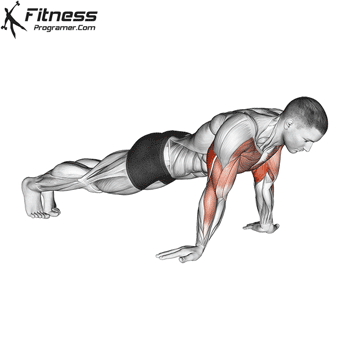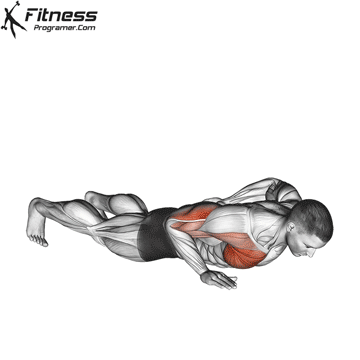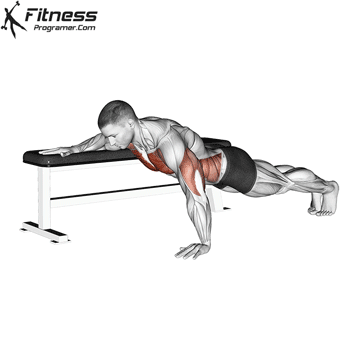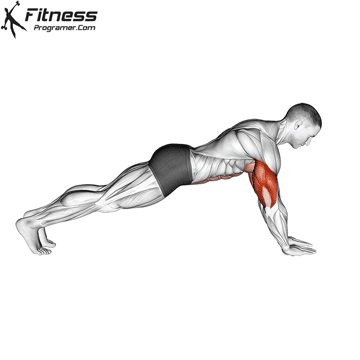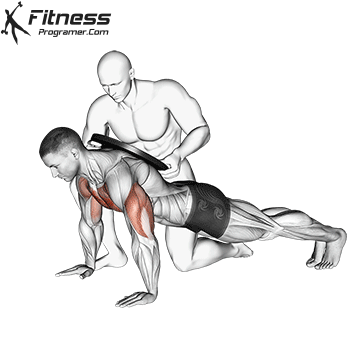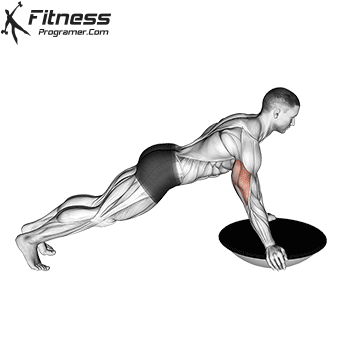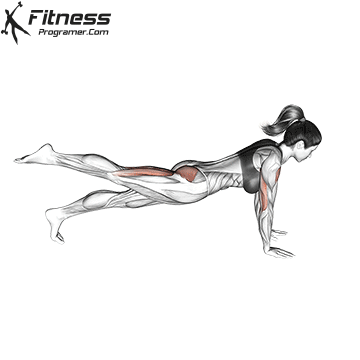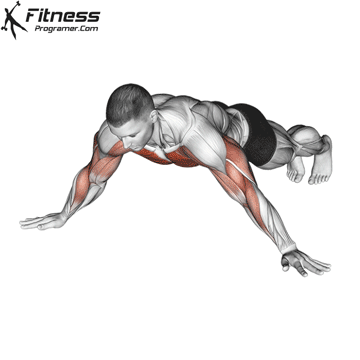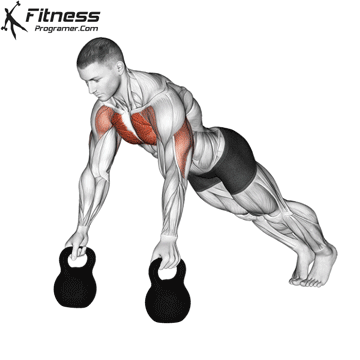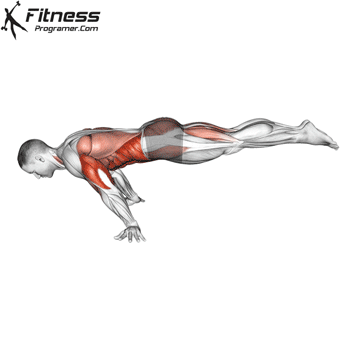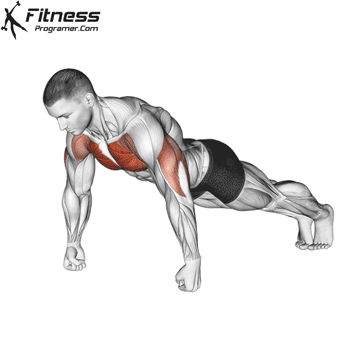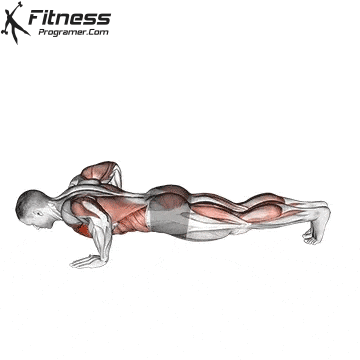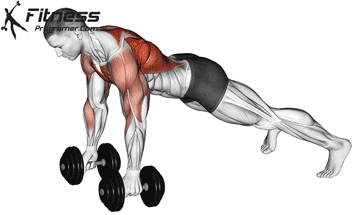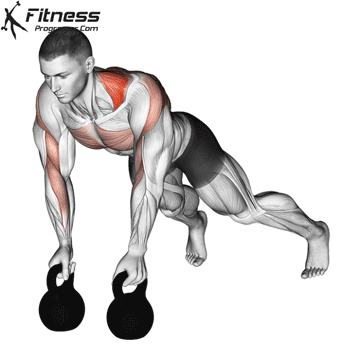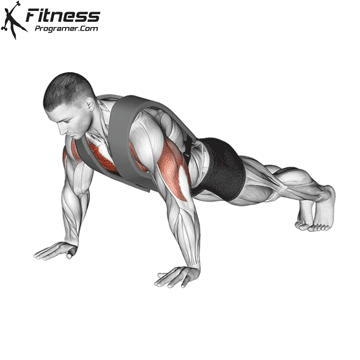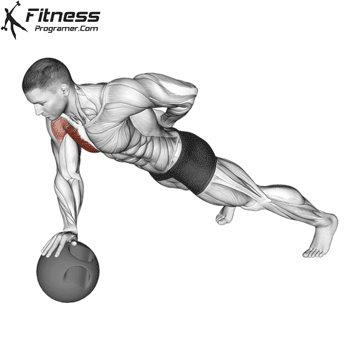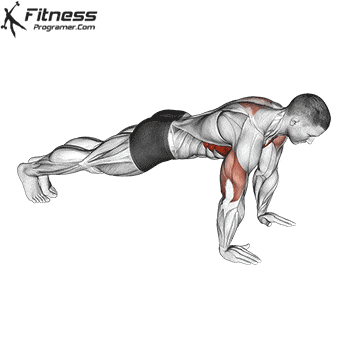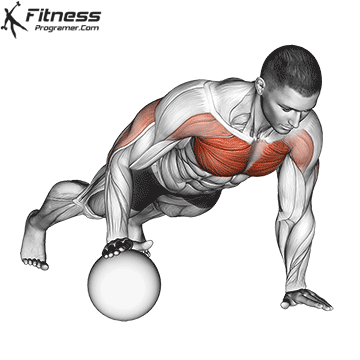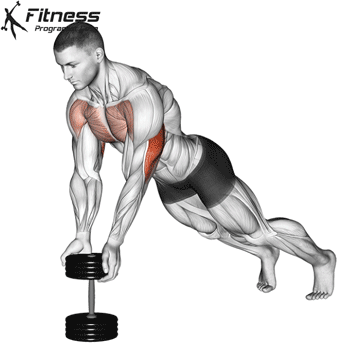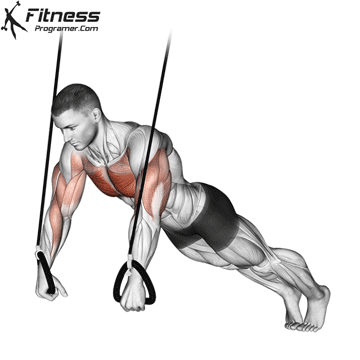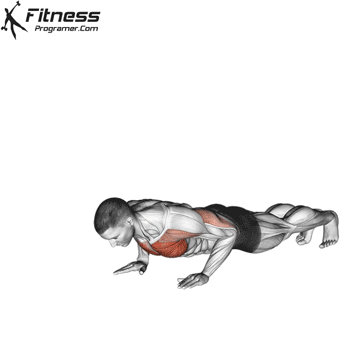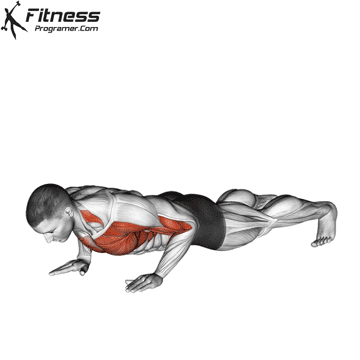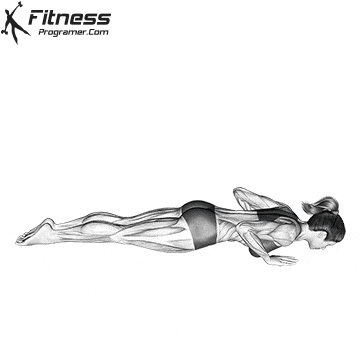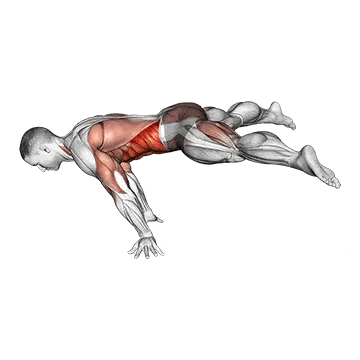Overview
The Medicine Ball Push-Up is an advanced push-up variation performed with both hands on a single medicine ball. The narrow grip and unstable surface place a high demand on your triceps, chest, and core, making this a powerful tool for athletes and lifters seeking functional upper body strength. It also trains coordination, shoulder stability, and core engagement in one compact movement.
How to Perform Medicine Ball Push-Up
To perform the Medicine Ball Push-Up correctly, follow these steps:
Place a stable medicine ball on the floor and position it under the center of your chest.
Grip the top of the ball with both hands close together, keeping fingers spread for control.
Step back into a plank with your body in a straight line, feet shoulder-width apart for balance.
Brace your core and glutes, keeping your spine neutral.
Lower your body slowly by bending the elbows close to your ribs. Aim to bring your chest close to the ball.
Push back up with control, extending the elbows fully while maintaining tension throughout your body.
Tips for Proper Form
Maintain body alignment: Keep your shoulders, hips, and ankles in a straight line.
Keep your elbows tucked: This emphasizes the triceps and protects the shoulders.
Engage your core: Prevents sagging or arching during the movement.
Choose a firm, non-slip ball: Stability is crucial to avoid tipping or rolling.
Control the descent and ascent: Slow movement improves tension and safety.
Common Mistakes
Letting elbows flare: Reduces triceps focus and may strain the shoulder joint.
Using an unstable ball: Soft or overly round balls increase injury risk.
Hips dropping: Leads to poor posture and low back strain.
Rushing through reps: Fast reps on an unstable surface reduce muscle activation and control.
Inadequate range of motion: Not lowering close enough to the ball limits effectiveness.
Benefits of the Medicine Ball Push-Up
Enhances triceps and chest development: The close hand position maximizes loading on the triceps and inner pectorals.
Improves wrist and core stability: The narrow, unstable base recruits wrist stabilizers and deep core muscles.
Increases pressing range of motion: The elevated hand placement allows for deeper chest engagement during each rep.
Develops shoulder joint control: Balancing over the ball trains your scapular stabilizers and shoulder girdle integrity.
Trains functional upper body strength: Combines raw pressing power with balance and coordination, mimicking real-world movement.
How to Incorporate Into Your Routine
Use Medicine Ball Push-Ups as a main push movement or a finisher on upper body or push-focused days. Aim for 3 to 4 sets of 6 to 12 slow, controlled reps. Beginners can start with their hands on a more stable platform before progressing to the ball. Advanced users can elevate the feet or add a tempo to increase difficulty. Combine with dips, overhead presses, or stability exercises for a comprehensive upper body workout.
Muscles Worked
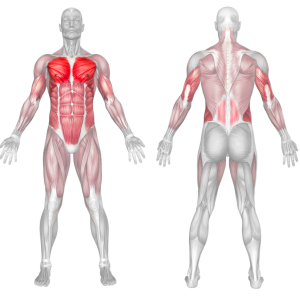
Other Push-up Variations
Push-ups can be modified and progressed to suit your fitness level. You can start with knee push-ups and work your way up to more challenging variations like diamond push-ups or one-arm push-ups.

